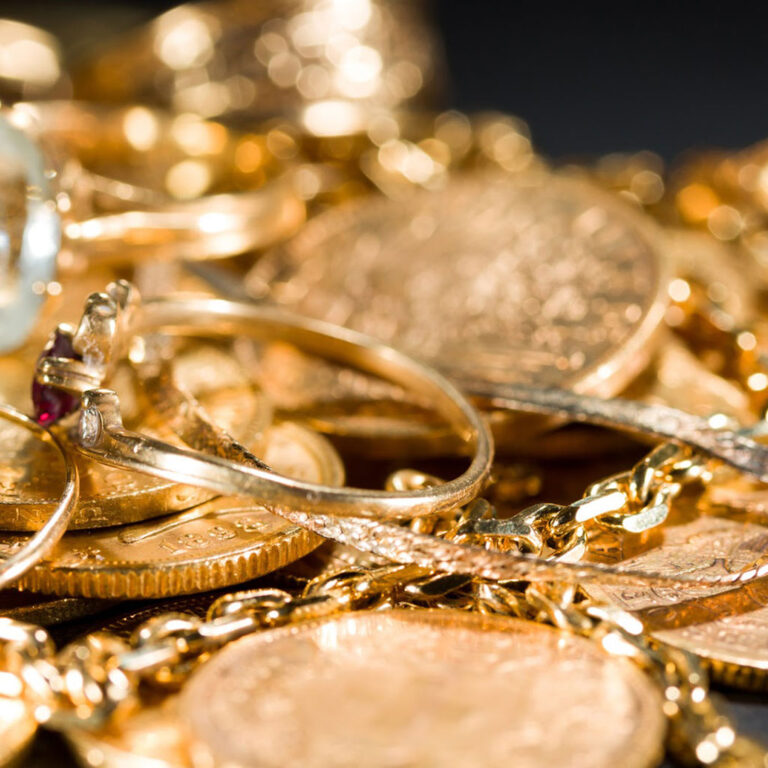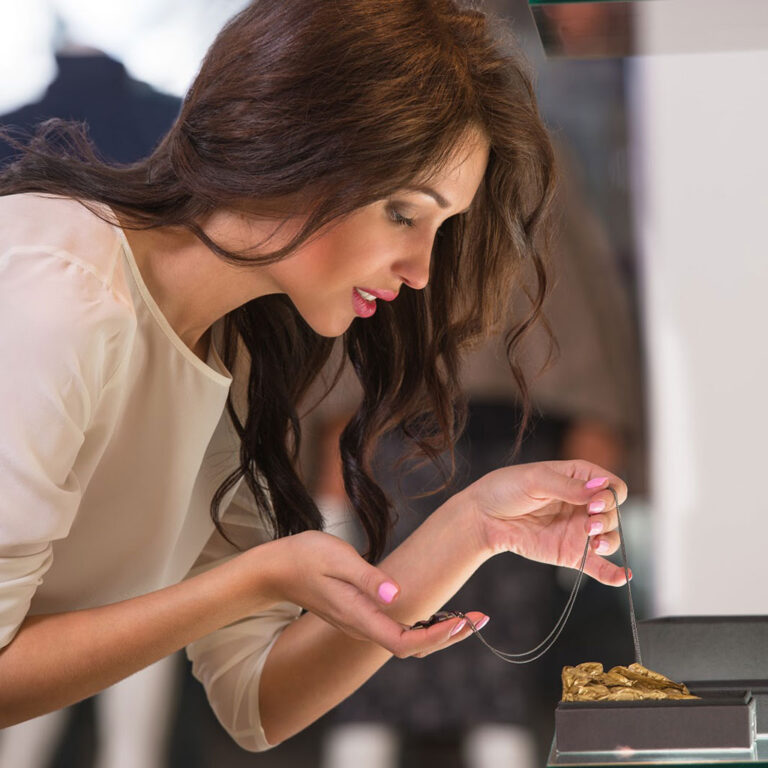Middle Eastern Gold
Table of Contents
In Dubai, UAE
Dubai gold jewelry comes in a variety of karats including 14 karat all the way up to 24 karat – the reason for the variety is that Dubai is a popular vacation destination, where travelers often shop for gold and different karats give buyers different options.

Gold coins from Middle Eastern countries
Countries throughout the Middle East are known for their gold coins and gold bars. These are popular with collectors. Here are just a few of the different types of coins available in the different countries:
- Bahrain – 100 dinar gold coin
- Egypt – 5, 10, 20, 50 piastre gold coin and the 1 pound gold coin
- Iraq – 5 – 100 dinar gold coin
- Israel – 20 – 5000 lirot gold coin; sheqalim gold coins (various denominations)
- Jordan – ¼ dinar to 60 dinar gold coin
- Saudi Arabian – guinea gold coin; also known as the pound gold coin
- Yemen – riyal in gold, silver, copper; buqshah in gold, silver, copper (various denominations)

What parts of the Middle East does Middle Eastern gold come from?
‘The Cradle of Gold’, also known as Mahd Al Thahab, is the premier gold mining section of the Arabian Peninsula. It’s located in Al-Medinah, Saudi Arabia and believed to have been mentioned in the Book of Genesis in the story of the Garden of Eden.
Currently, the Saudi Arabian Mining Company, also known as MA’ADEN is in control of mining in the area but it is believed that due to depleting resources, the mine will close. People have sought to mine gold in this region during three different periods in history.
- In 3,000 BC
- During the time of the Islamic Abbasid Caliphate (750-1258 AD)
- Again in 1936.
In Dubai
Dubai’s gold markets – also known as souks – are bustling with business. Other big Middle Eastern gold markets include Egypt’s, Iran’s and Saudi Arabia’s. These Dubai markets sell a variety of gold jewelry, gold bars and gold coins.
How many karats are in Middle Eastern gold?
Gold in the Middle East is high in karat – around 18 karat up to 21 karat.
How to tell if it’s Middle Eastern gold or not
The best way to tell if it’s Middle Eastern gold is to check for Arabic numerals on the bottom of the jewelry item, or inside it. These numerals are a hallmark, meaning they let the buyer know how many karats are in the gold jewelry. The numbers could be in English (‘750’ or ‘875’) or they could be in Arabic.
Common types of Middle Eastern gold jewelry
- The Fatimid Period produced gold jewelry known for its intricate gold filigree work. The crescent moon was a popular shape at the time – now a popular symbol of the Islamc faith.
- The Hand of Fatima, usually depicted with an eye in the center of the palm, became a popular ornament meant to represent the five pillars of Islam. At the time of the birth of the Hand of Fatima, jewelry was worn in the form of earrings, necklaces, bracelets, anklets and even nose rings.
- Egyptian jewelry was found in the ancient village of Sumaria (now Iraq). It contained lapis lazuli, carnelian and turquoise – and it is some of the oldest jewelry ever found in the world.
Modern day gold jewelry
In the modern day Middle East, gold jewelry is popular. Gold jewelry is given to a bride at her wedding in many Middle Eastern countries. Additionally, it is thought to be fashionable ornamentation and at the same time a good financial investment. Let’s take a look at some popular modern Middle Eastern gold jewelry pieces:- stackable rings
- gem-encrusted pendant necklaces
- modern takes on Arabic calligraphy
- the use of coins and medallions
- geometric shapes
- cufflinks
- prayer beads
- henna patterns
- arabesque motifs
Can you sell Middle Eastern gold jewelry in the US?
Yes, you can sell your gold from the Middle East in the United States. This type of gold jewlery is often valuable because of its high purity. Gold in the Middle East is generally made between 18 karat and 22 karat.Can you buy Middle Eastern gold jewelry?
Yes, buying Middle Eastern gold jewelry can be an ornamental fashion item, but it can also be an investment opportunity. This is the way many women in the Middle East see their gold jewelry, by the way – as a valuable financial investment opportunity available for resale when needed.Choose Crown Gold Exchange
Why choose us? Crown Gold Exchange holds the utmost respect for you and your valuables. When you visit one of our locations, we make sure that you feel welcome, and that your property is protected. We use industry-standard equipment to ensure accurate measurement of your valuables, and we have a special process to keep your valuables safe. Our accuracy enables us to offer you top dollar, and we have several different payment methods available for your convenience, so you won’t be waiting around to get paid.
Crown Gold Exchange will purchase any kind of gold you bring us, including 8-karat, 10-karat, 14-karat, 18-karat, 21-karat, 22-karat, 24-karat, or anything else. We buy gold bars, gold bullion, gold jewelry and some gold plated items like pocket watches. If you happen to be in possession of an exclusive piece made by a top gold designer such as Cartier, Tiffany, Rolex, or Patek Philippe, we will often pay more than the weight of the item. Such special pieces often command a higher price on the secondary market due to their superior craftsmanship.
